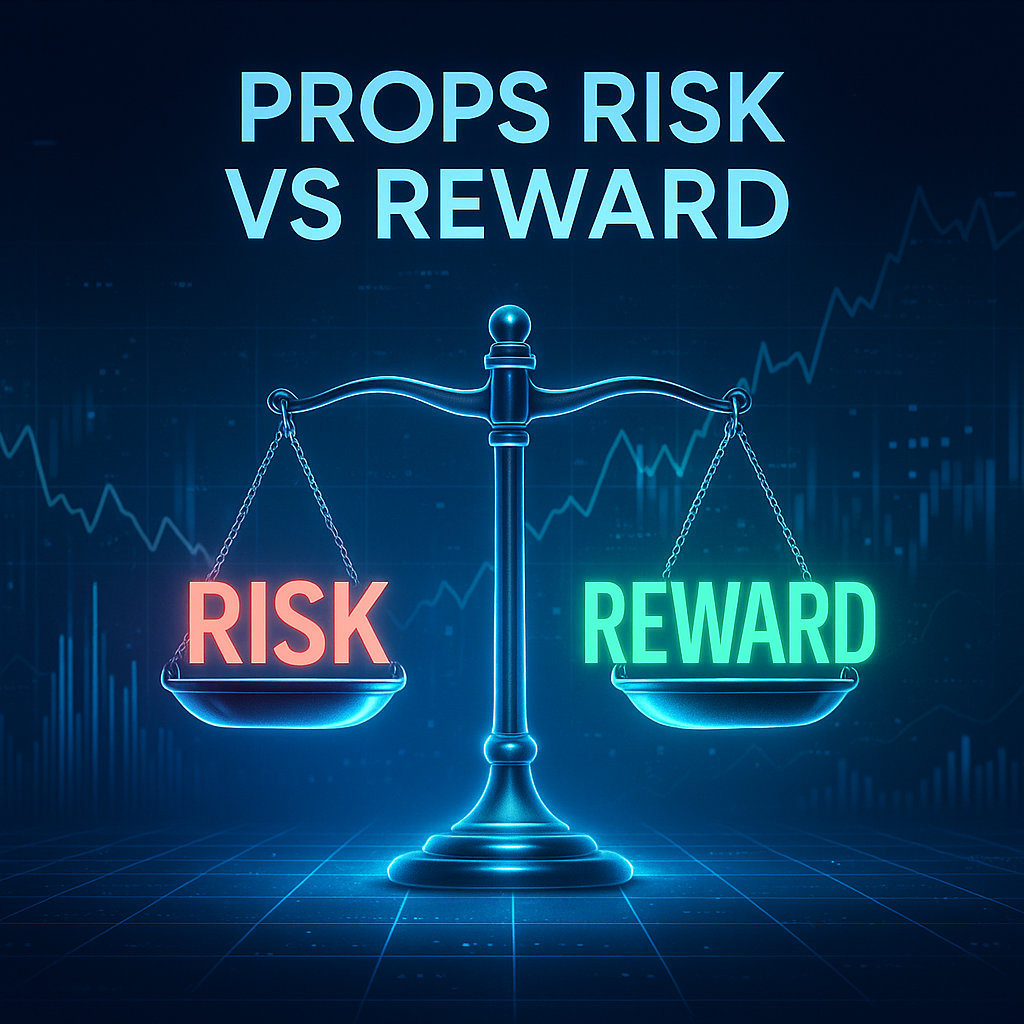Risk vs Reward in Prop Trading: Are You Playing It Right?
In the world of proprietary trading, understanding props risk vs reward is the key to long-term success. Whether you’re just beginning or already funded by a firm like Larsa Capital, your ability to weigh risks against potential gains directly impacts your profitability and career longevity. This article explores how to approach the delicate balance between risk and reward in prop trading and how to develop a mindset that promotes sustainable growth.
The Core of Props Risk vs Reward
At its core, the props risk vs reward equation asks a simple question: Is the potential reward worth the risk you’re taking? In proprietary trading, you’re typically using firm capital, which adds a unique layer of accountability. You need to follow strict risk parameters while still hitting performance targets. A poor balance can lead to disqualification, while a smart balance sets the stage for scalable success.
In this environment, every trade must be approached with careful analysis. Traders who fail to respect the risk side of the equation often experience emotional decision-making, overtrading, and eventual losses. On the other hand, overly conservative traders may miss opportunities that could help them progress through funding stages.
Why Managing Risk is More Important Than Chasing Profit
New traders often enter prop trading with dreams of big profits. However, seasoned professionals understand that managing losses is even more important. Proper risk management ensures you stay in the game long enough to let your edge play out over time.
Moreover, risk controls are usually embedded in the firm’s rules. For example, most programs include daily loss limits and maximum drawdowns. Violating them—even once—can end your evaluation or funded account. So, the trader who survives is not the one with the highest returns, but the one with the best risk-to-reward discipline.
Transitioning from impulsive to disciplined trading isn’t easy. Still, using tools like daily journaling, trade reviews, and pre-market preparation can help you better identify setups that are actually worth the risk.
Calculating Reward: Know What You’re Aiming For
Risk is only one side of the equation. To make sense of props risk vs reward, you also need to measure your reward potential correctly. That includes:
-
Defining realistic profit targets
-
Using favorable risk/reward ratios (like 1:2 or 1:3)
-
Tracking win/loss ratios over time
Many traders make the mistake of aiming for home runs rather than consistent, repeatable wins. Instead of targeting 10x returns on a single trade, professionals look for patterns that deliver a consistent edge.
A smart way to balance reward is by sizing trades relative to risk. If you’re risking 1% of your capital, your target should ideally be 2–3% or more. This gives you a cushion to withstand losses while still growing your account.
Props Risk vs Reward: How to Build a Winning Strategy
A key to mastering props risk vs reward is developing a trading strategy that aligns with both your personal risk tolerance and the firm’s guidelines. While each strategy may differ in approach, a winning one always includes:
-
Defined entry and exit rules
-
Risk caps per trade and per day
-
Clear setups based on proven data
-
Contingency plans for adverse market conditions
Backtesting and forward testing help validate your strategy before applying it with real capital. At Larsa Capital, traders are encouraged to simulate their strategy in demo environments, ensuring both risk and reward factors are well balanced before real-world execution begins.
The Psychology of Risk and Reward
Trading is as much psychological as it is technical. Emotions like fear and greed can distort your risk/reward judgment. For example, fear might push you to cut winners early, reducing reward, while greed may tempt you to hold onto losers, increasing risk.
To combat this, building emotional discipline is critical. This includes:
-
Sticking to your plan under pressure
-
Accepting losses as part of the process
-
Practicing patience during slow markets
-
Reviewing performance weekly—not just daily
Remember, the best traders manage their mindset with the same discipline they apply to their charts.
Practical Tools to Track Your Risk/Reward Metrics
To make informed decisions, you need data. Fortunately, modern trading platforms offer analytics tools to monitor performance. These include:
-
Daily risk exposure dashboards
-
Trade journaling software
-
Automated risk alerts
-
Risk-adjusted return metrics
Using these tools not only protects your capital but also helps refine your strategy over time. The more data you collect, the more confident and precise your decision-making becomes.
Final Thoughts: Are You Playing It Right?
Understanding props risk vs reward isn’t a one-time task—it’s an ongoing discipline. Every trade presents a new opportunity to apply what you’ve learned. If you consistently focus on managing downside while maximizing calculated upside, you’ll find yourself on the path to prop trading success.
In the end, it’s not about avoiding risk—it’s about owning it with confidence, strategy, and discipline.

